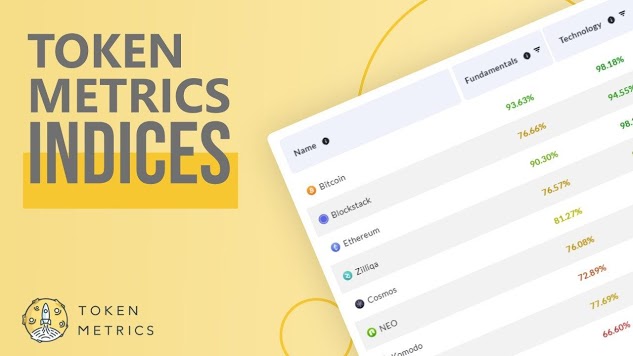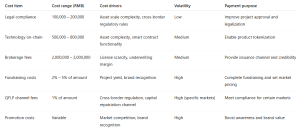No gear, no problem! 3 ways to earn Bitcoin through cloud mining and staking

Bitcoin’s (BTC) rapid recovery above $46,000 has renewed calls for a $100,000 BTC price by the end of 2021, while the effects of China’s crackdown on the mining industry are slowly beginning to fade as the Bitcoin network hash rate shows signs of recovery.
One of the side benefits of China’s crackdown is that it has lowered the barriers of entry into the Bitcoin mining space, which has been shown to provide profits in both bull and bear markets.
Bitcoin mining is one of the few ways that investors can acquire BTC without directly purchasing it from the market, and is quickly becoming an industry dominated by big money interests that can afford the electricity costs and upkeep required to run a mining operation.
Here are some options available for the average crypto stacker to acquire more BTC through cloud mining contracts, crypto lending platforms and centralized exchanges (CEX).
Cloud mining contracts
The cloud mining industry has been around since Bitcoin’s early days, and it offers those interested in mining Bitcoin who lack the space, equipment and electricity required an opportunity to outsource their production.
Some of the more well-known companies that offered cloud mining services include Genesis Mining and HashNest, but demand for their services has exceeded their capabilities, resulting in all their Bitcoin mining contracts being sold out.
One of the current mining operators with available contracts is Shamining, a company based in the United Kingdom that has been in operation since 2018, and claims to have data centers worldwide with locations in California, Mexico, Cape Town, South Africa and London, England.
Through this service, users can rent mining equipment and pay for the associated costs of operating the units, while the company handles the physical housing, operation and maintenance. Once operational, generated proceeds can be withdrawn to a Bitcoin wallet specified by the user.
Current rental contracts include two options for GPU miners, which cost around $283 for 23,580 gigahashes per second (GH/s) or $1,066 for 94,340 GH/s, and another option for ASIC miners with a current cost of $2,571 for 235,849 GH/s of mining power.
All contracts indicate that they have profitability that starts at 143%.
Another option that allows users more flexibility regarding the parameters of their mining contract is ECOS, a company that grew out of the Free Economic Zone located in Hrazdan, Armenia, and has been in operation since 2017.

As seen in the graphic above, a 50-month contract for 9 terahashes per second currently costs $1,668 and is projected to result in a profit of 272.82% at a BTC price of $70,000.
It should be noted that all cloud mining services offer warnings about the high risks involved and that no level of profit can be guaranteed. This could be due to a variety of circumstances, including fluctuating electricity prices, Bitcoin price volatility and advances in mining technology that lead to substantial increases in mining difficulty, which renders older equipment obsolete.
Related: Bitcoin mining difficulty jumps a second time as miners settle offshore
Crypto lending services
A more traditional option available for hodlers to acquire more Bitcoin by utilizing their current stack that doesn’t require any further investment, like mining, is through lending services that offer a yield on deposits.
Nexo and Celsius are two of the most well-known lending platforms that allow cryptocurrency users to borrow funds against their crypto holdings or earn rewards for deposits.
At the time of writing, Celsius offers users an annual percentage yield (APY) of 6.2% for Bitcoin deposits, and Nexo offers a standard return of 5% on flexible-term deposits, while fixed-term deposits that go a minimum of one month can earn 6%.
A third option that provides users with a 4% return on BTC deposits is BlockFi, a crypto asset service provider that offers interest accounts and crypto-backed loans and has also recently launched a Bitcoin rewards credit card.
Related: What bear market? Investors throw record cash behind blockchain firms in 2021
Earn BTC from centralized exchanges
Several centralized exchanges also offer Bitcoin holders a return on their BTC deposits, albeit at lower rates than those mentioned above.
Binance, the largest CEX in the crypto ecosystem, offers users an estimated APY of 0.5%, while third-ranked exchange Huobi offers 1.32%.
The best yield offered on a United States-based CEX can be found on Gemini where users can earn 1.65% on their deposits.
KuCoin offers a more free-market approach to BTC lending where lenders can set the parameters of the loan terms, choosing between contract lengths of seven days, 14 days and 28 days while getting to set their own daily interest rates to compete with other lenders on the market.
The lowest rate currently offered on KuCoin is an annual rate of 1.82% on a seven-day contract.
As seen in the data provided, there are multiple ways to increase a Bitcoin stack as opposed to simply buying on the open market, but they are becoming scarcer as time progresses.
With large institutions, energy companies and governments beginning to develop Bitcoin mining infrastructures, smaller market participants are increasingly being squeezed out as cloud mining facilities are unable to keep pace with demand.
Bitcoin lending is increasingly looking like the main way BTC holders will be able to earn a yield paid in BTC in the future, while Bitcoin-backed loans offer a way for hodlers to access the value of their tokens without the need to sell and create a taxable event.
Want more information about trading and investing in crypto markets?
The views and opinions expressed here are solely those of the author and do not necessarily reflect the views of Cointelegraph.com. Every investment and trading move involves risk, you should conduct your own research when making a decision.













